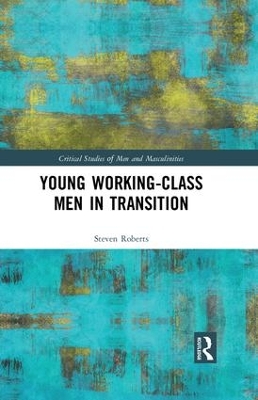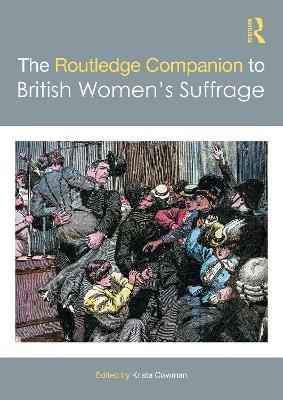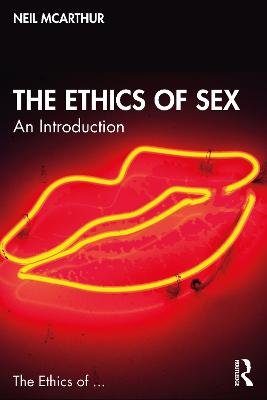Young Working-Class Men in Transition
 -10%
portes grátis
-10%
portes grátis
Young Working-Class Men in Transition
Roberts, Steven
Taylor & Francis Ltd
06/2018
240
Dura
Inglês
9781138217188
15 a 20 dias
453
Preface
Chapter 1
Youth Transitions, Young Men and Social Change
Introduction
Youth transitions and social change
Outline of the book
Chapter 2
Dominant representations of working-class masculinity: the so-called 'crisis of masculinity' and the academic response
Introduction
The so-called 'crisis of masculinity': A prominent, problematic, durable
discourse
Not exactly a 'crisis': Sociology's reflections on changes, challenges and continuities to masculinity in new times
Changing circumstances, changing working-class masculinity?
A relatively singular account of masculinity across variations in place
and space
Conclusion
Chapter 3
Making sense of men: outlining a framework for the study of contemporary masculinities
Introduction
Social Constructionism vs Post-Structuralism: a genuinely entrenched
binary?
Connell's theory of Hegemonic Masculinity
Critiques of Hegemonic Masculinity Theory
The constraints of HMT's deterministic outlook
Theorising change: Anderson's Inclusive Masculinity Theory
Anderson's concept of homohysteria
Critiques of IMT
Making the most of Mannheim's legacy: masculinities and the sociology
of generations
Bringing in Bourdieu: a fuller account of the social actor
Conclusion
Chapter 4
The study context and methods
Introduction
The research sites
Accessing the sample
The research process
Chapter 5
Looking back and looking forward at age 18-24: educational histories and aspirations
Introduction
Underachieving and disengaged boys?
School days: Just an 'in-betweener'
'Ordinariness' and alienated instrumentalism
Post-16 'choices'
Critical moments in post-16 education engagement and drop out
Higher education: Awareness, aspirations, ambitions
Conclusion
Chapter 6
Young working class men navigating the precarious world of work: identity in and out of the labour market
Introduction
Embracing service work: the new normal for young working-class men
Working-class young men's working lives
Sources of identity beyond the sphere of employment
Conclusion
Chapter 7
Contemporary Working-class Masculinities and the Domestic Sphere: the diminishing significance of 'the man of the house'
Introduction
Domesticity, Gender Roles and Social Class
Attitudes and imagined futures at age 18-24
Walking the walk, not just talking the talk: Gender dynamics in the home,
seven years later
Conclusion
Chapter 8
Emotional disclosure online and offline: changes and continuities in forms of intimate expression among working-class men
Introduction
Emotion in abundance: an unexpected observation?
Sharing emotional content in research interviews
Emotion-laden activity on Facebook
'It's just between mates': Making sense of misogyny and homosexually
themed language
Conclusion
Chapter 9
Conclusion: Changing the tune, but not changing the record: Working-class masculinity in transition
Introduction
Myth busting: the key findings
The transformed working class habitus
Practical implications
Preface
Chapter 1
Youth Transitions, Young Men and Social Change
Introduction
Youth transitions and social change
Outline of the book
Chapter 2
Dominant representations of working-class masculinity: the so-called 'crisis of masculinity' and the academic response
Introduction
The so-called 'crisis of masculinity': A prominent, problematic, durable
discourse
Not exactly a 'crisis': Sociology's reflections on changes, challenges and continuities to masculinity in new times
Changing circumstances, changing working-class masculinity?
A relatively singular account of masculinity across variations in place
and space
Conclusion
Chapter 3
Making sense of men: outlining a framework for the study of contemporary masculinities
Introduction
Social Constructionism vs Post-Structuralism: a genuinely entrenched
binary?
Connell's theory of Hegemonic Masculinity
Critiques of Hegemonic Masculinity Theory
The constraints of HMT's deterministic outlook
Theorising change: Anderson's Inclusive Masculinity Theory
Anderson's concept of homohysteria
Critiques of IMT
Making the most of Mannheim's legacy: masculinities and the sociology
of generations
Bringing in Bourdieu: a fuller account of the social actor
Conclusion
Chapter 4
The study context and methods
Introduction
The research sites
Accessing the sample
The research process
Chapter 5
Looking back and looking forward at age 18-24: educational histories and aspirations
Introduction
Underachieving and disengaged boys?
School days: Just an 'in-betweener'
'Ordinariness' and alienated instrumentalism
Post-16 'choices'
Critical moments in post-16 education engagement and drop out
Higher education: Awareness, aspirations, ambitions
Conclusion
Chapter 6
Young working class men navigating the precarious world of work: identity in and out of the labour market
Introduction
Embracing service work: the new normal for young working-class men
Working-class young men's working lives
Sources of identity beyond the sphere of employment
Conclusion
Chapter 7
Contemporary Working-class Masculinities and the Domestic Sphere: the diminishing significance of 'the man of the house'
Introduction
Domesticity, Gender Roles and Social Class
Attitudes and imagined futures at age 18-24
Walking the walk, not just talking the talk: Gender dynamics in the home,
seven years later
Conclusion
Chapter 8
Emotional disclosure online and offline: changes and continuities in forms of intimate expression among working-class men
Introduction
Emotion in abundance: an unexpected observation?
Sharing emotional content in research interviews
Emotion-laden activity on Facebook
'It's just between mates': Making sense of misogyny and homosexually
themed language
Conclusion
Chapter 9
Conclusion: Changing the tune, but not changing the record: Working-class masculinity in transition
Introduction
Myth busting: the key findings
The transformed working class habitus
Practical implications
















